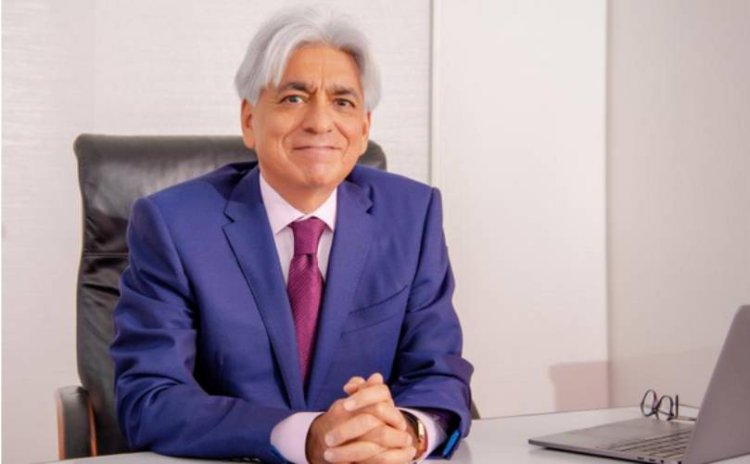How A CEO Can Be Fired From A Company He Or She Founded
In the intricate world of corporate governance, the idea of a founder being fired from the very company they started and built from scratch is a perplexing phenomenon.

A nightmare most founders of successful businesses may not tell you is that they can be fired from the companies they started. Wait, isn't one of the major driving forces for the younger generation toward entrepreneurship today being the ability to be their own bosses?
In the intricate world of corporate governance, the idea of a founder being fired from the very company they started and built from scratch is a perplexing phenomenon. That is why when OpenAI announced that it had fired its founder, Sam Altman on Friday, November 17, it shook the tech and corporate world to the core.
This is a phenomenon that despite being uncommon, has unfolded in several boardrooms, leaving many questioning the power of dynamics at play and in most cases, becomes one of the main reasons founders are afraid of getting into partnerships.
The founder of the company is nothing less than a creator who builds the business from scratch, making a business out of nothing. The founder has to work from the bottom level and work hard to bring the business to a higher level.

Silhouette of a board of directors during a past meeting. /FILE
Start-Up Phase
Woman or man, the founder is involved at every step in the course of the business, from carrying out the market research, finding the investors, building up various teams across the business set-up, to hiring the best talents available, all in a bid to turn his or her dream company into a resounding success.
However, for thriving businesses, a founder often comes second to the Board of Directors, shareholders, and investors. This denotes that a founder has the risk of being thrown out by the board at any point in time and for a variety of reasons, like an employee being fired from a company.
It is unfortunate that despite being the backbone of the company, the founders still run the risk of being fired from their own companies. Ironically, despite being the founding father of the business, the position of the founder is always under threat.
The ugly truth is that, once a business is well established, the founder is the not only sole head around whom the business revolves, especially if the business has gone public. Sadly, there have been numerous cases, wherein well-known business tycoons were thrown out of their own companies by tearing their business apart from them.
Shareholding, Investors and Equity
One might wonder how a founder who built his firm from the ground up is at risk of being kicked out. This is because when a business is started, the founder owns 100% of the equity of the company, meaning he or she would have been the sole decision-making authority then.
But to make the company prosper to higher levels, the founder has to bring in prospective investors. These funds are pitched in either as debts that the company will have to pay back or in the form of equity in exchange for the funds given by the investors.
Equity is often preferred as in that case the company only owes funds that are proportional to the profits earned by the company in the given time period.
On the other hand, opting for equity would mean that the founder is giving the ownership to others, though in bits and pieces. By doing this, the founder also spares a potential seat at the table of the Board of Directors.
It would thus imply that by giving the equity, the person receiving it gets to take part in the decision-making process of the company.
Every time the founder accepts to give the equity to someone, another person gets added to the Board of Directors. This implies that more and more members get the power to vote for decisions, on par with the founder of the company.
The fact that a board of directors is established to provide strategic guidance and oversight becomes the most crucial point for a founder as this is where the seed for potential disenfranchisement is planted. If founders do not stay vigilant, the voting power can slip from their hands completely and the investors could take control.
One critical element that can likely kickstart such a process is through shareholding. In the early stages, founders typically hold a significant portion of the company's shares, allowing them substantial decision-making power.
Suppose in the search for funds, the founder agrees to give 30% of equity to investor A, and another 30% of equity to another investor B. This leaves the founder with 40% of the equity in total and the investors together hold 60% of the equity, thus implying that the investors now have 6/10 votes on the panel of the Board of Directors.
This dilution can lead to a scenario where the founder no longer possesses a majority stake, making them susceptible to decisions made by the board, which is elected by shareholders. This is where the investors can fire the founder of a company if they feel that he or she is not competent to lead the organisation.
Voting Powers
It is worth it to note that the founder still has 40% of the equity and owns four votes on the Board. Still, founders can lose control of their company if the investors happen to introduce voting rights discrepancies, one of the many means of a hostile takeover.

A woman raises her hand during a past board meeting. /GETTY IMAGES
While common shares are the standard form of ownership, some investors may acquire preferred shares with enhanced voting power. This can change tact in favour of those investors and the board they elect, reducing the founder's ability to sway crucial decisions.
Simply put, if you as a founder don't have the majority of the votes, you can no longer be the CEO or the sole decision-maker of the company.
The process is not always hostile; founders may willingly cede control for the sake of scaling the company or bringing in the expertise they lack. However, when power dynamics shift without the founder's consent, it can lead to a profound sense of loss and frustration.
Empathy therefore becomes crucial when examining these situations. Founders often pour their heart, soul, and endless hours into building their companies.
How To Avoid Being Fired From Your Own Company...For Now
Nonetheless, it is essential for founders to navigate these waters with strategic acumen, understanding the implications of every decision, from equity distribution to board composition. If there is only one founder on the board, the first major investor taking a seat on the board marks the milestone where the founder no longer has control.
As a founder, you have to negotiate for yourself to ensure that you will be with the company long-term and are able to protect your interests. Remember, the valuation doesn’t matter unless you control the outcome of the company.
Engaging in open conversations with investors and board members, and ensuring clear agreements are in place from the outset, Some other critical steps you can take to prevent yourself from being ousted from your own company include:
Preallocate common board seats in the company when you incorporate.
This will help to ensure balanced seats that will be taken by investors at a later date and avoid feeling pressured to fill those seats.
Conduct due diligence when it comes to board members.
Review them and their credentials carefully and don't be afraid to lay out your expectations upfront.
Don't give up board seats.
It's important to not give up two board seats during a financing round. The lead investor is generally the one taking the most risk, that is, they should get the seat for that risk. If others insist, make the board observers.
Ensure that founder board seats are irrevocable.
This helps founders maintain their involvement in the company, even if they are no longer active operators.
Implement term limits for independent board seats.
This can provide a mechanism for removing individuals who are not aligned with the company's core values or who may be acting in a detrimental manner.
Establish a code of ethics.
This should be adhered to by all team members and emphasize the commitment of the board and team to serving the company's mission and customers.
When raising capital, consider prioritizing funding from impact-driven funds.
Focusing on funds that have a strong focus on social impact can help safeguard the business against potential corruption. It can also help ensure that the company's values and purpose are upheld, regardless of who may be leading the organization in the future.
Even after following all these steps, a founder still has the risk of being ousted from his own company, one way or another, meaning they only buy him or her some time to get their act together.
All this may sound theoretical, but there are cases where founders have been kicked out of their own companies.
Companies Which Kicked Out Their Founders
Other than Altman, a good example is the late Steve Jobs, who was forced out of Apple in 1985, though he returned to Apple as CEO in 1997 after a crisis forced the company to merge with NeXT (a company Steve Jobs founded after leaving Apple) in a $400 million (Ksh60.98 billion) deal.
Jack Dorsey, one of the co-founders of Twitter (now known as X), was fired in 2008 due to poor management style and communication issues with board members. However, he returned in 2015 before the app's eventual takeover and rebranding by Elon Musk.
The founder of the Uber taxi-hailing app, Travis Kalanick, was forced to leave the company in 2017 after there were allegations of discrimination and sexual harassment against him.
In Kenya, businessman Bharat Thakrar founded SCANAD in 1982 and later set up WPP Scangroup Plc, He was suspended and ousted from the company in 2021 after allegations of financial misconduct but was later cleared after investigations failed to find incriminating evidence.


 admin
admin 




